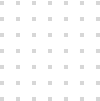
Today, facial recognition systems used in numerous areas mainly serve to identify and verify people through facial information. The face detection system identifies or proves people's face information in light of information obtained from photos, videos, or real-time images.
The facial recognition system appears as a sub-branch of biometrics. Similar to biometric features such as fingerprint, iris, voice, and retina, facial recognition also enter our daily life over time. Face recognition applications operating in many different sectors, such as health, education, security, and transportation, enable the human face's anatomical properties to be converted into numerical data.
How Does the Face Recognition System Work?
The face recognition system works in the light of mathematical data created based on the distance or size measurements of the anatomical features of the human face, such as the eyes, nose, mouth, cheekbone, and jaw. For example, factors such as the distance between the two eyes, the cheekbone protrusion, the eye socket's depth, and the nose's width are the basis for facial recognition. In other words, a mathematical template of the face is extracted. The aim here is to define the distinctive features that distinguish the look.
The mathematical information obtained is sent to the software and compared with the database embedded here. Facial recognition search work in two different ways: The first is diagnostics, and the second is verification. Facial recognition allows the faces in a particular database to be compared with the entered face. Face verification is the name given to the system that confirms whether the face information previously saved in the system belongs to the face information entered.
Where is Face Recognition Systems Used?
Facial recognition devices are used even in our mobile phones, especially in private security areas where superior technology is used. Face identification technology, which has entered many different areas of our lives, is used in shopping malls, stadiums, large-scale exams, airports, and border controls, improving the store experience, banking, marketing, and advertising.
Facial recognition technology, which offers more use in our daily lives thanks to developing technologies continuously, is often used for the follow-up of the personnel at the entrance and exit. Thus, personnel management is carried out in contactless and hygienic conditions. Facial recognition, also used through CCTV cameras during the detection of criminal cases, is one of the technologies frequently used by law enforcement officers in identifying and catching criminals.
Facial Recognition Device Advantages
• Fast: The cutting-edge technology behind it enables facial recognition software to obtain relevant facial information from a database including thousands of users' facial data within seconds. Standing in front of the camera performing facial recognition is sufficient to perform facial recognition.
• Practical: Technological equipment such as cameras, tablets, and phones, which are used as face scanners, are materials that can be easily obtained today. They also allow practical use.
• Flawless: Materials or accessories that change the face of the person, such as hair, beard, mask, hat, and glasses, do not prevent the face search process.
• No need to use a password or card: Thanks to the facial recognition system, there is no need to use a printed card or password during entry-exit processes. Thus, measures can be taken against password loss and card loss.
• The future technology: Facial recognition technology is estimated to become much more widespread.








